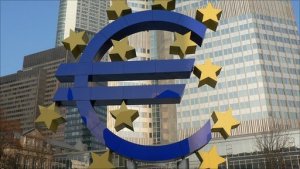With both the financial and social world still reverberating from the news of Donald Trump taking the US presidency the markets expected a Brexit-style panic, but it has yet to emerge. The Euro continued its move lower through the middle of November, influenced by the emergence of political conversation across the globe. For the second week in a row, EUR/USD traded sharply low, closing at 1.0584 for a loss of 2.52%. It’s no surprise then that the USD is being driven by the Trump reflation trade, which is pushing up both nominal yields and inflation expectations, sending the US-German two-year yield spread to its widest level in 27 years this past week.
The surprise presidential election result seems to have re-sparked a power to the people sentiment across Europe – ‘If the UK can vote for Brexit and the US can elect Donald Trump, well then why not us?’ With the Italian constitutional referendum set to take place on 4 December it’s looking increasingly likely that it won’t pass, as the Italian BTP 10-year yield has shot up to its six-month high, closing the week at 2.089%. Similarly, with Marine Le Pen of the French National Party gaining popularity quickly in polls ahead of the 2017 French election, the French OAT 10-year yield is also making its way to its six-month high, at 0.754%.
If political risks in the Euro-Zone continue to build up there is ample room for market participants to drive down single currency values in the short-term. Among futures traders, non-commercials are only holding 119.2K net-short contracts through the week ending November 15, 2016. Relative to the extreme set at the end of March 2015, when there were 226.6K net-short contracts held, bearishness towards the Euro isn’t that significant at present time.
However, Neil Wilson of ETX Capital suggested earlier this week that there have been signs that perhaps the bond bearers are pausing for breath as Trump selects his cabinet:
“After 12 days of president-elect Trump there are signs that the Trump trade is running out of steam.”
With that said, markets continue to factor in the no ECB rate cut this year, with 0% chance of a 10-bps rate hike in December, per overnight index swaps. If the European Central Bank President Mario Draghi decides to offer insight into the ECB’s next steps, we’ll be focused on hearing what they intend to do with their capital key and deposit threshold requirements. Otherwise, with yields shooting up across the Euro-Zone, it is possible that a failure by Draghi to soothe nerves could push on ‘taper tantrum’-type conditions.
Looking down the calendar, the list is rather quiet with regards to significant economic data. That said, there are several European growth indicators due, of note the preliminary Euro-Zone, German, and French PMI readings for November. Signs that economic activity is starting to moderate following the US election – perhaps a sign of fear that the wave of populism will crash back onto Europe’s shores – could be foreboding as we move into a few weak weeks.
Looking past the Thanksgiving weekend, the first half of December will prove uneasy for EUR/USD, with the Federal Reserve’s policy meeting, the European Central Bank’s policy meeting and the UK Supreme Court Brexit hearings all taking place within the month.





